How do you comfort a dog with pancreatitis?
Well, that’s not a pleasant question to ask. Pancreatitis includes severe cases that might be fatal for your dog. Unfortunately, this is one of those diseases that can’t be treated at home with fluid therapy or some pain medications.
No, dietary changes focusing on proteins and vitamin supplements won’t do it. If you knew what pancreatitis might do to your dog, you’d think twice before feeding him table scraps.
Pancreatitis is a severe health condition that requires immediate veterinary care. But, there’s a lot of things that dog owners can do to comfort their dogs and ease their pain.
From making a cozy nest, to changing their dog food and making sure they take their pain relief pills and anti-nausea medicine – dog owners come to rescue!
With additional veterinary advice, your dog can bounce back on his feet in no time.
But, what is pancreatitis in the first place? Why does it happen, and what are its symptoms?
If you stay tuned, you’ll learn something new about your dog’s health.
How Do You Comfort A Dog With Pancreatitis?
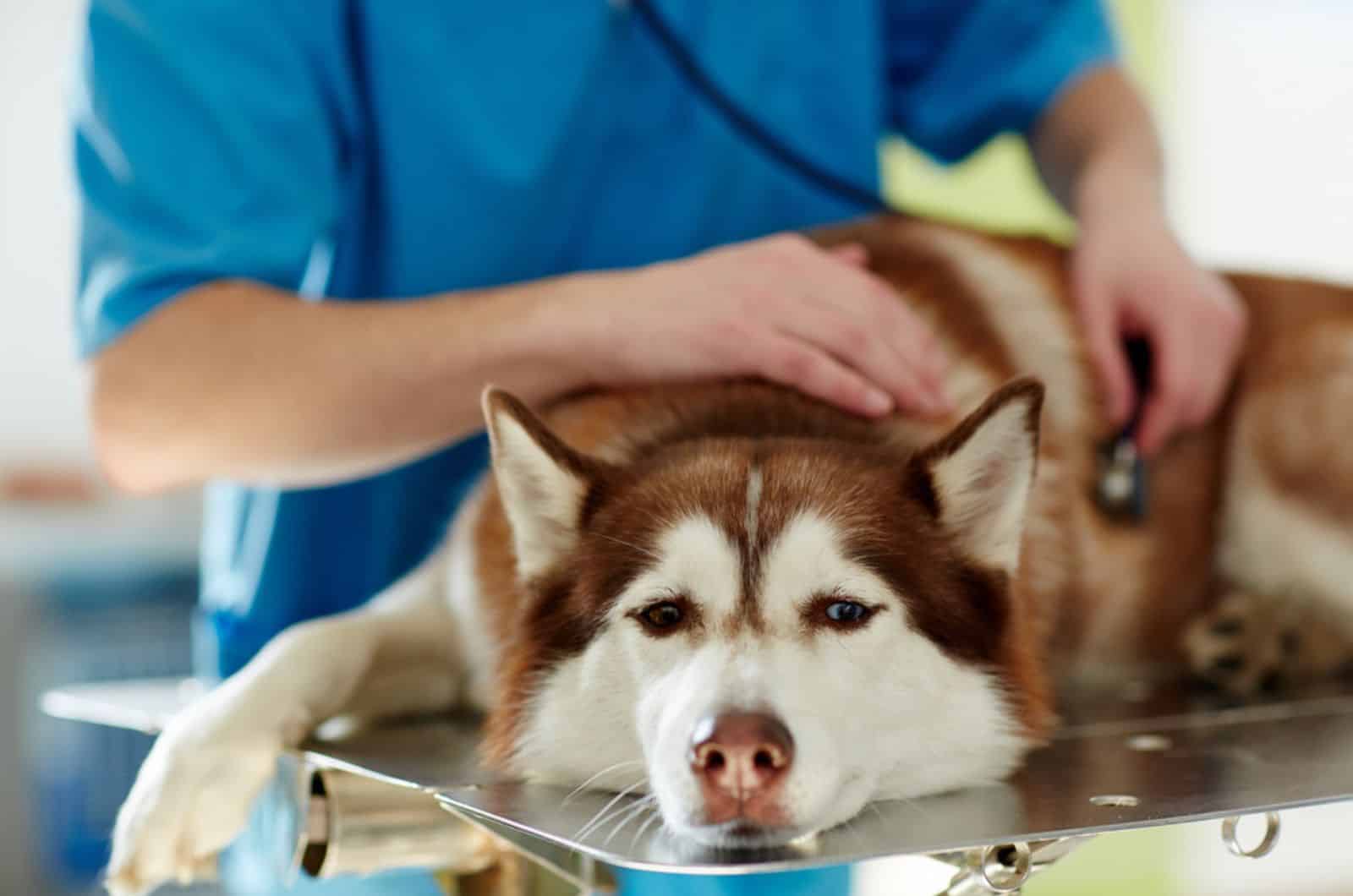
Comforting your dog with pancreatitis doesn’t mean you should just pat him on the head and bring him to the vet. Pancreatitis in dogs is a condition that might end fatally, so better be safe than sorry.
There are several steps you should follow if you want to relieve your dog’s pain from this condition. Of course, they all demand veterinary assistance and treatment. You should never ignore symptoms of pancreatitis or try to relieve this condition alone at home.
Pancreatitis can cause troubles for your dog on a long-term basis. So, instead of masking the problems, you should try to find their root and their solution.
If you are wondering how to comfort a dog with pancreatitis, then you should know that besides the following tips, there’s an even greater one. Every dog fighting pancreatitis needs love and care from their owner. If you’re not caring enough, the whole treatment might go downhill.
Show your dog that you really mean him well, shower him with love and support, and of course, follow the next comforting tips!
Put Your Dog On R&R
Rest is a key part of recovery from pancreatitis, no matter if it’s a mild one or a severe inflammation. Your dog’s body needs all the energy it can get to recover from this condition. Believe it not, resting can do much more for your dog than medications. Sure, they help, but they’re nothing without some rest.
Dogs that suffer from pancreatitis often expose symptoms like lethargy. They show they have no energy to do the simplest daily things like going potty or getting up to greet family members as they come home.
Your dog is in lots of pain from the inflamed pancreatitis. Most likely, his abdominal muscles will be all tight and sore. Ideally, your dog should rest on lots of pillows. Make his bed as comfortable as it can be.
Recovering from pancreatitis can be difficult in a crowded home, especially around kids. Encourage your family members to be cautious around your dog. Don’t allow the kids to play roughly with the dog.
Let your furry buddy get the much-needed rest, but don’t let him feel excluded. Gentle cuddles and praises are always welcome.
Change Your Dog’s Diet
Inflamed pancreatitis can bring lots of abdominal pain to your dog, and thus, reduce his appetite. Dogs suffering from pancreatitis already have a poor appetite. However, their diet should be altered because calorie meals are not what your ill dog needs right now.
The moment you suspect your dog is suffering from pancreatitis, you should take him for a check up. Among other treatment measures, your vet will prescribe a change in your dog’s diet. He’ll either recommend a homemade diet or a kibble brand designed especially for sensitive tummies and dogs suffering from some medical conditions.
In this case, pancreatitis requires a low-fat diet. There’s an ongoing debate questioning whether a high-fat diet causes pancreatitis. Even if there is no link between the two, a high-fat diet should not be consumed by dogs for the sake of their overall health status.
I encourage you to try cooking for your dog for a while. Homemade meals will soothe your dog, and provide him with enough energy to recover from these conditions.
Try making some bland meals. Pick simple proteins like chicken, and add carbohydrates that won’t trigger your dog’s tummy, i.e., white rice or sweet potatoes. Learn how to prepare sweet potatoes for your dog here! Next to his water bowl, there should be a smaller one with bone broth. Dogs love it, and it does wonders for appetite recovery.
Reducing The Quantity Of Meals
Every severe health condition requires limitation of your dog’s meals. No dog needs too much food when he’s in pain. As a matter of fact, such dogs can’t even eat properly when they’re in pain. Still, some pooches are pretty gluttonous, so…
Before changing your dog’s diet, your vet will advise you to reduce the quantity of his meals. In most cases, a small fast will need to take place. Dogs normally don’t fast unless they’re severely troubled.
Fasting for 12 or 24 hours will help your puppy’s tummy calm down, and any sensitivity that has been going on should be reduced.
Trust me… I know that your dog might be hungry, but that’s just a force of habit. He’s in pain, and that’s much bigger than his hunger. Nothing will happen if he fasts for half a day or even a full day. This will bring him lots of benefits, including a calm tummy.
That’s exactly what your dog with pancreatitis needs: peace and calm.
When the fasting period is over, you should let your dog have a few small meals throughout the day. So, instead of two main meals (breakfast and dinner), you should try offering food 5 to 6 times a day.
Smaller, more frequent meals within the recommended daily calorie intake for ill dogs are always a safe card to play.
Provide Enough Drinking Water
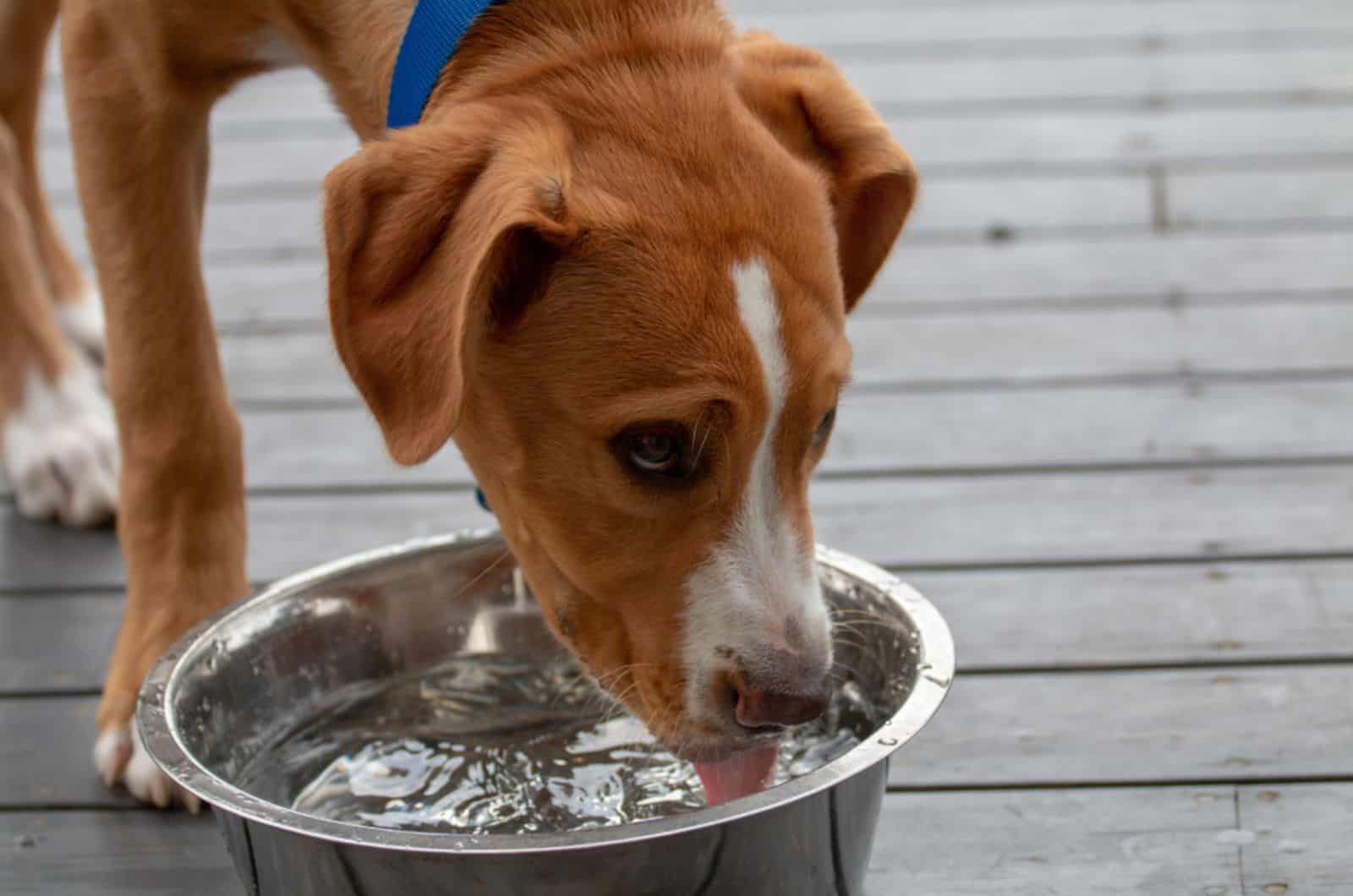
Dogs can go without food for a while, but they cannot go without water for more than 24 hours. Some extremely harsh situations will require your dog to be without water for a day. Even dogs that have undergone special surgeries need fluids to stay hydrated.
Dogs should drink one ounce of water per every pound of their body weight. Problems occur when dogs drink too much or too little of water. Those are cases of severe health conditions.
As far as pancreatitis is concerned, dogs that suffer from it are known to drink lots of water. Excessive water drinking is one of the first symptoms of pancreatitis. Simply put… your dog will feel thirsty all the time. He could drink gallons of water if you let him, and he still won’t quench his thirst.
Dehydration and overhydration are two conditions you should monitor with caution. Dehydration can do more damage to your dog than you think. When a dog is dehydrated, he can have other side-effects such as dry nose, vomiting, diarrhea, lack of energy, and lack of will.
Light Exercise
Light exercise is welcome, but only after your dog has finished his treatment, and pancreatitis is no longer an issue for him.
Unfortunately, pancreatitis is linked to obesity, and a lot of dogs suffering from it end up being obese. Their pet parents find that it’s unnecessary to put them through regular exercise routines just after they’ve gone through the inflammation of the pancreas.
However, that’s a completely wrong decision. Dogs must work out, even if it means taking it slow in the beginning. Your dog should get back on the right track and start spending his energy bars every day.
Regular exercises will help your dog bounce back from pancreatitis faster, leaving no consequences.
Start with short walks, and increase the intensity if you notice your dog can take it.
No Harsh Contact
Dogs with pancreatitis experience a lot of pain. The level of pain depends on the intensity of the disease, and the life stage the dog is in.
Either way, such dogs should be handled with utmost care. There should be no harsh contact or harsh games. Your dog needs rest and sleep. He shouldn’t be doing any harsh exercises. Even climbing stairs should be avoided for a while.
Let your dog snooze cozily in one corner of your home where the everyday noise won’t bother him that much. Still, don’t shut him into one room and forget about him. Dogs are social creatures, and even when in pain, they still need human contact.
Your dog’s abdomen is really sensitive now, and it should not be touched, especially by little children. Kids may unintentionally hurt your dog and cause even more issues. Gentle cuddling is okay, but make sure you supervise your kids.
Watch Him Like A Hawk
Pancreatitis is a health condition that can become worse overnight. That’s why it’s super important to monitor every symptom your dog shows. As a matter of fact, you shouldn’t leave your dog alone even if you go to work. Either let someone else take care of him, or stay at home.
Pancreatitis can go from a mild condition to a life-threatening one.
Dog pancreatitis can be recognized easily if you know what the symptoms are. We’ll talk about them soon.
What I want you to understand is that I’m not joking when I say you should watch him like a hawk. Symptoms can become worse pretty fast, and you won’t even know what happend.
A higher body temperature, vomiting, blood in the stool, and lethargy can all be symptoms that could happen rather fast, and indicate the situation has become worse.
What Is Pancreatitis?
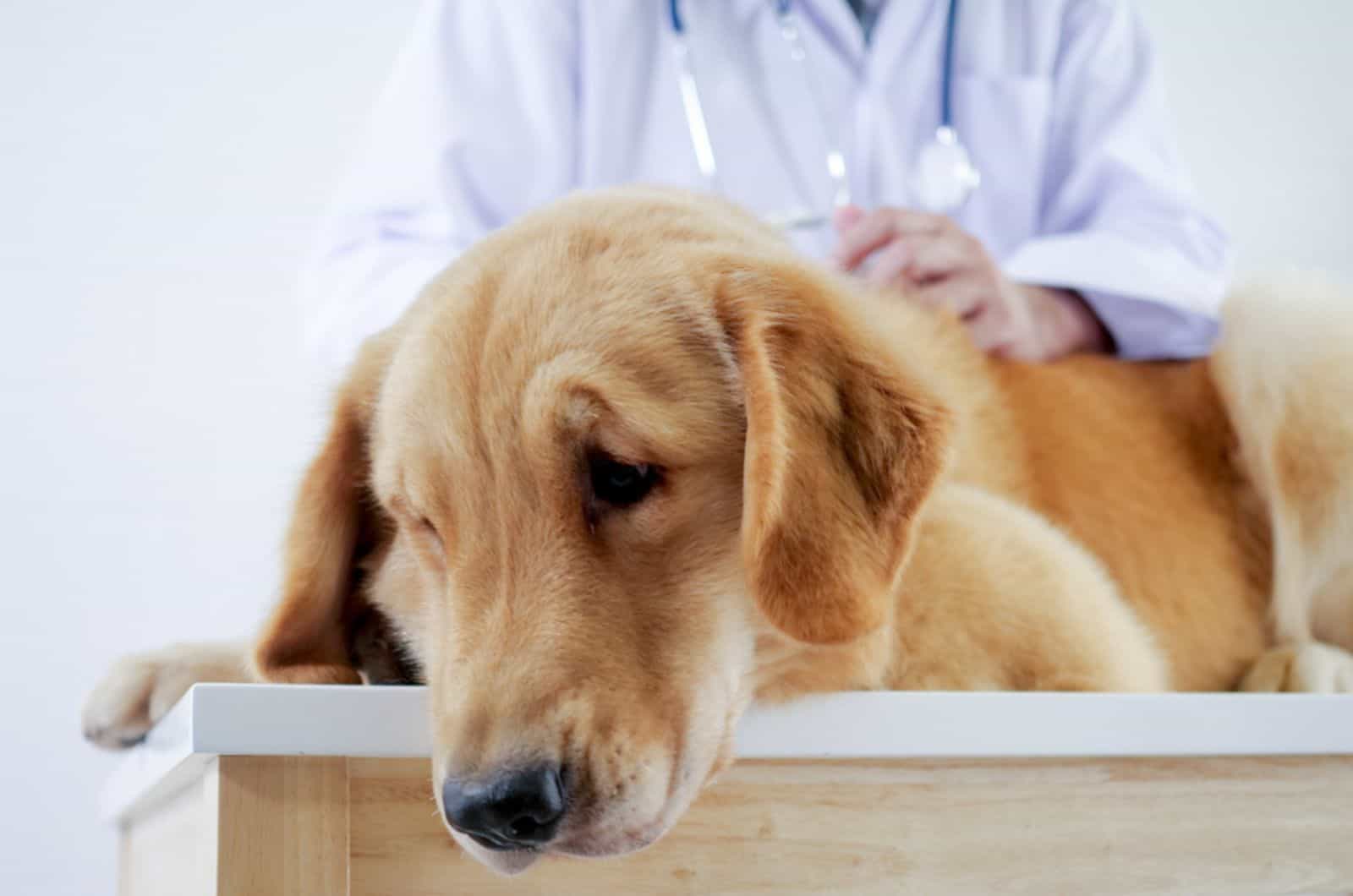
Pancreatitis is a condition that affects a dog’s pancreas – a pear-shaped organ that helps to digest food. This organ has endocrine and exocrine functions.
Normal dogs have a fully-functioning pancreas that sends digestive enzymes and probiotics to the small intestine. Once there, these enzymes will start to digest food. Enzymes become active as they are released.
However, when enzymes don’t reach the small intestine, since they’re active, they will react with the surrounding tissue, the pancreas, and other organs. Thus, they will cause damage, which is sometimes unrepairable.
Sadly, this medical condition happens quite often.
Besides these enzymes, the pancreas produces another pancreatic enzyme, insulin – a vital hormone that regulates a dog’s blood sugar levels. The pancreas also controls glucose metabolism. If it wasn’t for a normally-functioning pancreas, your dog might end up with severe diabetes.
However, when the organ gets inflamed, we can only refer to the condition as pancreatitis.
There are two types of this condition, and we’re about to learn a thing or two about them.
Can Pancreatitis Come In Different Forms?
Yes, the intensity of pancreatitis varies, and we can distinguish two types of pancreatitis. There is mild pancreatitis (or chronic pancreatitis), and severe pancreatitis (or acute pancreatitis).
What you should know is that both forms can cause tremendous issues for your dog, and even end fatally. Yes, pancreatitis, no matter if it’s a reoccuring one or an acute disease, is life-threatening. That’s why you don’t take symptoms of this disease for granted.
Mild (or chronic) pancreatitis is a condition that occurs over time. It’s a problem that goes on and off for a while. Chronic pancreatitis has mild symptoms, and usually doesn’t bug your dog a lot until it becomes something severe.
Chronic pancreatitis can’t get discovered easily because the symptoms often don’t appear as with acute pancreatitis. Your vet will most likely detect it via ultrasound during your regular check ups.
Acute pancreatitis is a whole new level of inflammation. Dogs that suffer from this form of pancreatitis will exhibit all the symptoms you’re about to learn.
Unfortunately, the acute form of pancreatitis is rapidly progressive. As soon as you notice any symptoms, you should notify your vet to start diagnosis and treatment.
What Are The Symptoms Of Canine Pancreatitis?
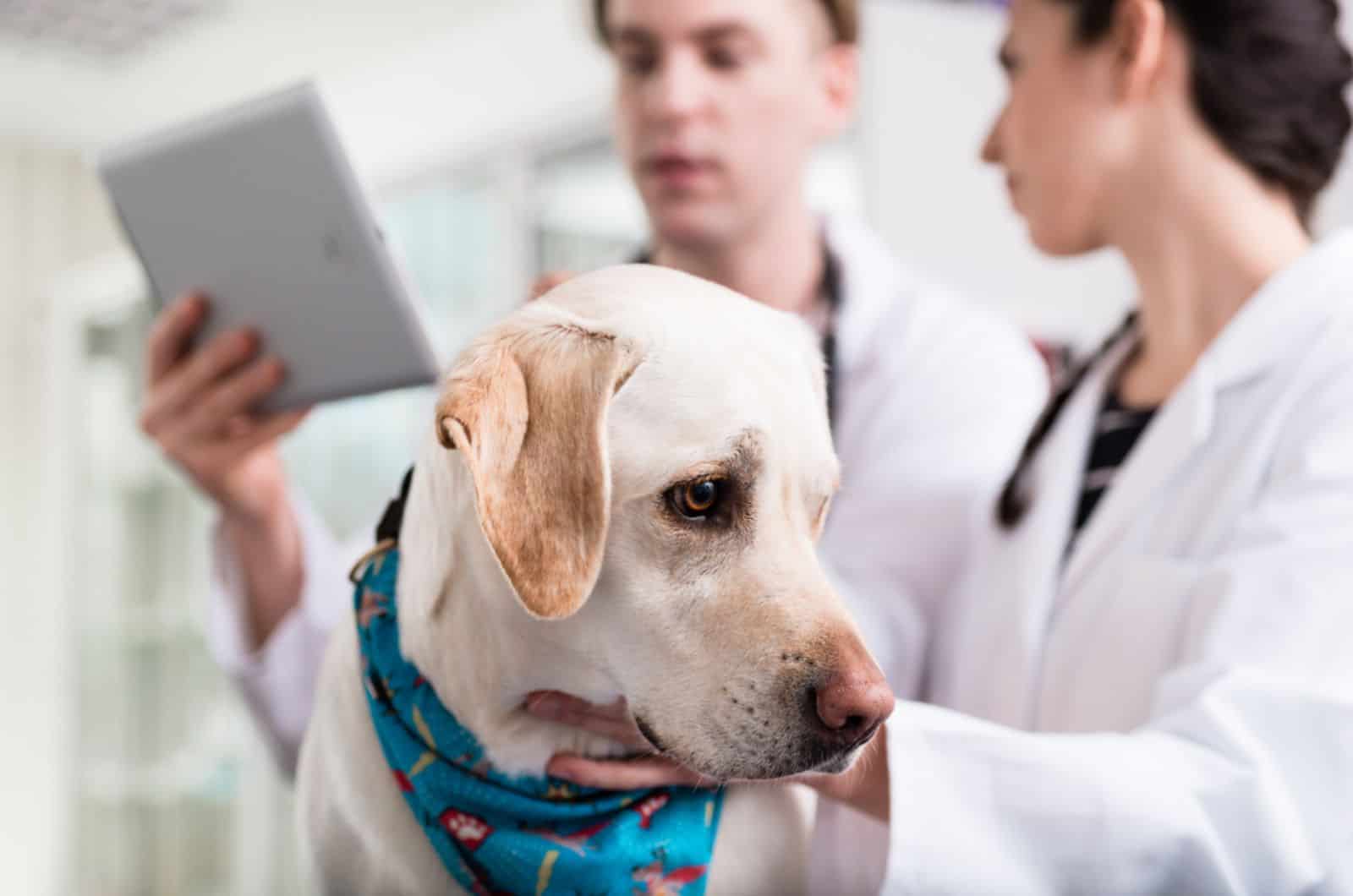
We come to a part you need to know. This is something that has to be learned and memorized for all times. Recognizing symptoms of some severe conditions may even save your dog’s life.
Small animals are usually more susceptible to this condition.
If your dog is a Miniature Schnauzer, a Mini Poodle, a Cocker Spaniel, or a Yorkie, he might be extra prone to pancreatitis. Some breeds are just at a higher risk of getting pancreatitis. That’s why you should keep an eye on things like vomiting yellow, diarrhea, and a change in diet habits.
Your pup will definitely lose its appetite and start acting without any energy to go through the day. Acute pancreatitis can be manifested in a change of the dog’s posture. Dogs will experience a painful abdomen, and thus, have a hunched back position.
Basically, your dog’s general behavior will drastically change. He will start to pant, experience difficulty breathing, and even gasp for air.
Dogs affected by pancreatitis will also show signs like drowsiness and lethargy. That’s a clear sign you should contact your vet.
In case your dog is not exhibiting any symptoms, but you still want to thoroughly check him, your vet will perform something called canine pancreatic lipase. This is a blood test that will tell if your dog has pancreatitis. Along with an ultrasound, those should be valid methods in detecting pancreatitis.
Should Pancreatitis Be Treated At Home?
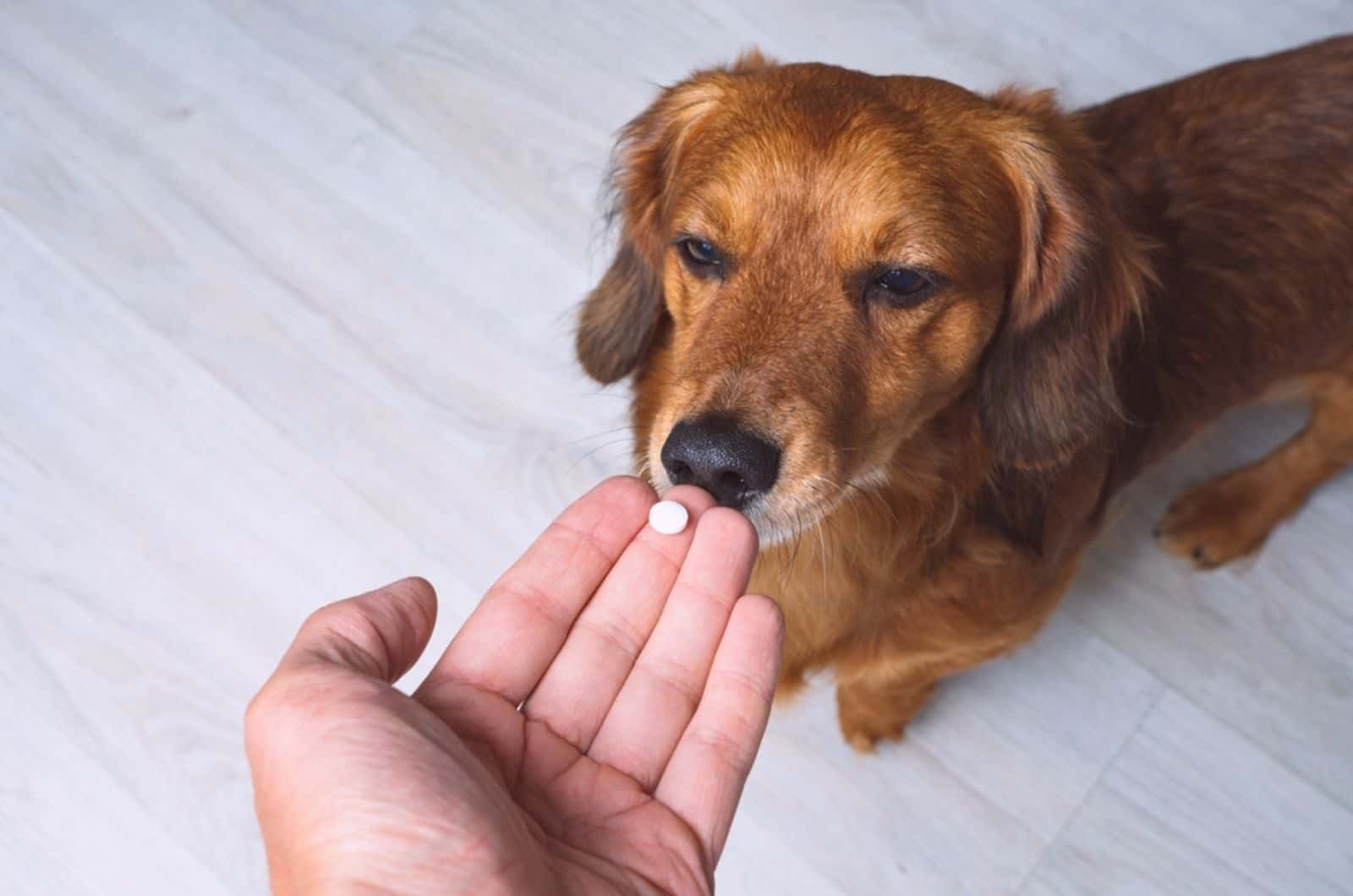
You should never treat medical conditions of your dog at home. Well, unless you’re a veterinarian.
You never know what lies behind some conditions.
If you suspect your dog has pancreatitis, don’t start him on home remedies immediately. I suggest you go to the vet and let him run tests on your dog to figure out how severe the pancreatitis is.
Mild cases can be treated at home with a lot of assistance and guidance from your vet. The vet will prescribe your dog medications, a new diet adjusted to the conditions, and a workout routine you guys should follow.
Mild pancreatitis can be treated for a while.
But, what if the condition gets worse?
Of course, you will notify your vet about any changes.
As you can imagine, severe (or acute) pancreatitis can’t be treated at home. It shouldn’t! If you want only the best for your dog, you should notify the vet about any signs of health problems your dog is experiencing.
Can Pancreatitis Kill My Dog?

Unfortunately, a severe inflammation of the pancreas can be fatal for your dog. Actually, any condition that’s left untreated can end in death.
Pancreatitis can kill your dog. That’s the ugly truth. But, since there’s a difference between types of pancreatitis, there will be a difference in terms of their mortality rate.
Mild pancreatitis is usually not fatal. Dogs bounce back pretty easily, and experience no additional complications.
However, acute pancreatitis is not to be messed with. This type of pancreatitis has a mortality rate of 33%. That’s pretty high.
Any signs of pancreatitis should be addressed by your vet. You can’t determine at home whether your dog has mild or acute pancreas inflammation. That’s why you should rush your dog to the vet as soon as you suspect this condition. You never know what other problems this inflammation might cause.
After all, we’re unaware of what happens inside your dog’s body. We don’t have X-ray vision. But, our vet has X-rays and tests that will determine the severity of the situation, and he will prescribe your dog treatment.
To Sum Up…
Now that you know how to comfort a dog with pancreatitis, you have nothing to worry about.
Pancreatitis is life-threatening, but it’s not something that can’t be stopped if you react in time. A lot of conditions can be treated immediately upon detecting it. You shouldn’t worry as long as you take your dog for regular vet checkups, and notify your DVM as soon as you notice any symptoms.
Vomiting, diarrhea, high temperature, loss of appetite, lack of energy, lethargy… they’re all symptoms of acute pancreatitis. Along with abdominal pain, these could be your signs that it’s time for veterinary medicine to kick in and help your dog.
Sure, you can treat your pooch at home for many things. But, pancreatitis isn’t one of them. What you can do is ease his pain at home, and make him comfortable for as long as he needs it.
Read Next: How To Comfort A Dog With A Fever
